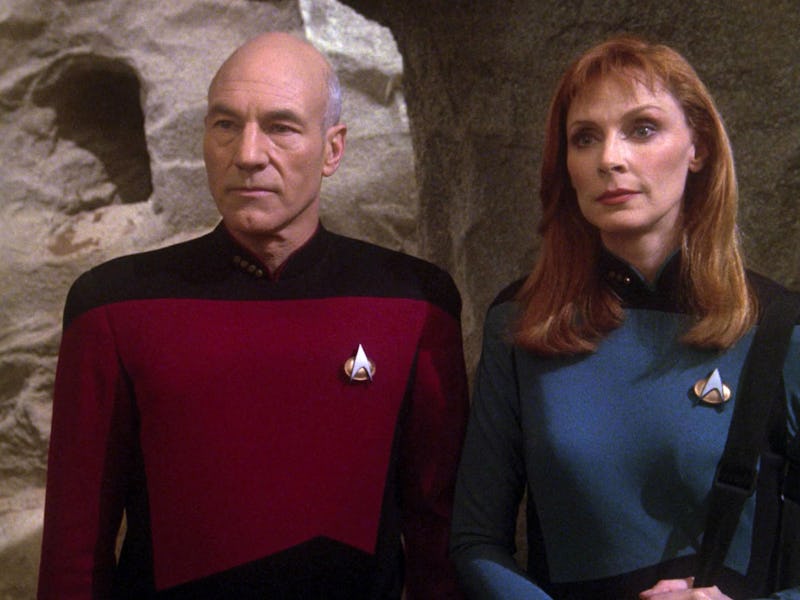Discovery Season 5 is Taking a Huge Swing With Star Trek Canon
Get out your space history books.

Why do so many Star Trek aliens look like humans? The real-world explanation is that way back in 1964, Gene Roddenberry said the format of Star Trek would focus on stories that took place on “parallel worlds.” This didn’t mean Trek was an alternate universe-hopping show, but that allegorically, the people encountered by the Enterprise were humanoid, thus making the stories easier to write and understand (and, from a budget perspective, easier to make). But there’s an in-universe explanation for this, too.
In 1993, Star Trek: The Next Generation devoted an episode to answering this big question. And now, 31 years later, Star Trek: Discovery is doubling down with a Season 5 storyline that serves as a direct sequel to that story. Here’s what this means and why it matters. Spoilers ahead for Star Trek: Discovery Season 5, Episodes 1 and 2.
The return of Star Trek’s Progenitors
The Progenitor’s message in the Next Generation episode “The Chase.”
At the end of Discovery Season 5, Episode 1, “Red Directive,” we learn that the data the crew has been assigned to protect is connected to discoveries made by a Romulan scientist in the year 2369. Season 5 happens roughly 820 years after that date, but as Kovich (David Cronenberg) tells Captain Burnham (Sonequa Martin-Green), this information has been kept hidden for centuries. Why?
Well, in “The Chase,” Picard, Crusher, and the Enterprise-D crew — along with representatives from the Cardassians, Klingons, and Romulans — discovered an ancient message coded within DNA that revealed everyone descended from the same ancient aliens. The Progenitors, as their message explains, “...seeded the primordial oceans of many worlds, where life was in its infancy. The seed codes directed your evolution toward a physical form resembling ours.”
Captain Burnham is floored by this information, which makes sense since she’s originally from the 23rd century, and her pre-time travel adventures in Starfleet predate Picard’s by about 100 years. But Burnham’s ignorance of the Progenitors isn’t because she and the Discovery crew are time travelers. There’s another reason why this has all been classified.
Discovery’s new God-mode tech
Captain Burnham (Sonequa Martin-Green) is racing to find the most powerful Trek tech of all time.
The fact that most humanoid-looking life in Star Trek descended from an ancient alien species isn’t a new revelation to longtime Trek fans. Even Original Series episodes “Return to Tomorrow” and “The Paradise Syndrom” hinted that several species originated thanks to some kind of organized panspermia. What is new is that the technology the Progenitors used to create life on thousands of worlds has been found.
In Discovery’s “Red Directive,” the journal left by the Romulan scientist is just the first piece of the puzzle. The larger mission is to find the technology the Progenitors developed millions of years ago, and so Discovery has revealed the most powerful technology in all of Trek canon to date. In The Wrath of Khan, we got the Genesis Device, a tech capable of instantly terraforming planets. In Voyager’s “Year of Hell,” the Kremin weapon ship pushed entire planets out of the spacetime continuum, altering history in the blink of an eye.
But those examples of super-tech were unstable. What’s interesting about the ancient Progenitor tech is that it obviously works. Discovery’s imperative to find the tech is classic Trek: if the ability to seed life on a planetary scale falls into the wrong hands, the galaxy could be changed forever. In the grand tradition of Star Trek, the biggest superweapons aren’t planet-destroying superweapons, but something that could redefine and rewrite life itself.